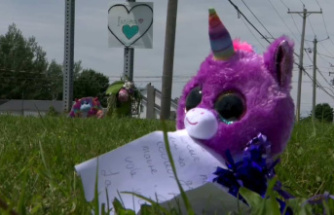Department of Homeland Security Secretary John Kelly has issued final orders that would allow immigration officials to deport tens of thousands more immigrants living in the country illegally.
The final orders, distributed to agency heads on Monday, wipe away protections implemented by the Obama administration that were designed to protect those here illegally who had not committed other crimes.
The final orders are very similar to drafts dated Friday that McClatchy had obtained over the weekend but that White House officials insisted had yet to receive final White House approval.
The directives allow for hundreds of thousands of immigrants to be quickly removed from the country without a court hearing. They also eliminate protections for children who arrived in the United States as “unaccompanied minors” but later are reunited with relatives living in the United States. They new orders foresees the prosecution of such children’s parents for paying smugglers to bring them here.
“The parents and family members of these children, who are often illegally present in the United States, often pay smugglers several thousand dollars to bring their children into this country,” the order reads.
The two directives outline how President Donald Trump’s Jan. 27 executive order will be implemented. They were approved by the White House and distributed to the heads of U.S. Customs and Border Protection, Immigration and Customs Enforcement and Citizenship and Immigration Services, among others.
The directives also foresee cooperation from Mexico to host immigrants who are detained in the United States but are entitled to a court hearing before they are deported. Currently, immigrants are released in the United States to await those hearings.
Under the new directives, however, an apprehended immigrant entitled to a hearing will be sent back to Mexico, or in rare instances to Canada, while their case is pending in U.S. immigration courts.
That plan immediately raised complaints from immigrant advocates.
“That’s mind boggling,” said Marielena Hincapié, executive director of the National Immigration Law Center. “I assume Mexico is going to have to agree to this. And then I question what are they going to be offered in order to be basically coerced into agreeing to this. Hopefully, Mexico knows better.”
More than 408,000 people were apprehended along the southern border last year. Most were fleeing poverty and violence in Honduras, Guatemala and El Salvador, three of the most violent countries in the world.
The Trump administration says the surge has overwhelmed federal resources and created “a significant national security vulnerability.”
Thousands of immigrants apprehended at the border and released from custody with court dates never appeared for their hearings. Immigration courts are experiencing a historic backlog of removal cases. Kelly said 534,000 immigration cases are now pending in courts – a 200 percent increase from fiscal 2004.
The directives also foresee hiring 10,000 more agents to enforce immigration laws away from the border and vastly expands the number of people who can be deported immediately after their apprehension.
Currently, so-called expedited removal is permitted only for people apprehended within 100 miles of the border and who’ve been in the country 14 days or less. Under Kelly’s orders, that period would become two years and include anyone caught throughout the United States.
Lawyers for immigration rights groups are already debating how to respond. Hincapié sees potential lawsuits related to the expansion of expedited removal, asylum cases and toughening credible fear policies. One of the questions being discussed is whether to litigate now on the face of the executive order or wait until the Trump administration starts implementing measures they see as violations.
“We’re going to have to make a judgment call,” Hincapié said.
While the directives state that there are no protected class of immigrants, Department of Homeland Security officials emphasized to reporters Tuesday that young people who were brought into the country illegally as children would keep their protections.
The order specifically exempts from enforcement young immigrants who currently are protected under Obama’s Deferred Action for Childhood Arrivals. That program was intended to protect people who were brought to the United States as children without documentation and essentially grew up here. Under the program, they can’t be deported for two years and are given permission to work.
Email: fordonez@mcclatchydc.com; Twitter: @francoordonez.
Our editors found this article on this site using Google and regenerated it for our readers.










